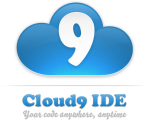Social Media Policy
It is becoming more and more important to have a well thought out social media policy.
In my last post I talked about the benefits and risks of embracing Web 2.0 technologies in the Enterprise. In this post I will talk about the dangers of not having a Social Media Policy.
It is important to have a policy that can protect the company against the dangers of the social media and its usage.
Some of which are:
- Loss of confidential information
- Breach of copyright
- Defamation
- False statements and or misleading and deceptive conduct
- The tort of Passing off
- Reputation risk
- Statutory risks including
- Breaches of the Privacy Act
- Breach of continuous disclosure obligations in the case of listed public companies
- Discrimination
- Orgranisation and industry specific risks posed by the organisations operating environment
Domino’s Pizza
Domino’s Pizza is an international pizza delivery corporation originating from the United States. The fast-food chain has restaurants in most large cities all over the world. Dominos is the second-largest pizza chain in the U.S. after Pizza Hut and has more than nine thousand corporate and franchised around the world.
Domino’s, similarly, to many other companies have had their problems with the rise of social media and its effects on the world.
What happened was two Domino’s employees posted a video on YouTube with unsavory pictures of how they prepared the food. This video quickly went viral with just under a million views on YouTube and mentions all around the web.
Although the actors in the original video claimed their actions merely were a prank and that the pizza was never actually left the store, the impact of the video was enormous.
Even people who’ve been with us as loyal customers for 10, 15, 20 years, people are second-guessing their relationship with Domino’s, and that’s not fair. -Tim McIntyre, Domino’s spokesman
Link
 Not only was the publics perception of Domino’s heavily affected, the stock market reacted similarly, as Domino’s stock price dropped 10% over the week costing shareholders millions.
Not only was the publics perception of Domino’s heavily affected, the stock market reacted similarly, as Domino’s stock price dropped 10% over the week costing shareholders millions.
Link: Domino’s loses 10% of its value in one week
But what Domino’s did that prevented the situation from going out of hand was that they quickly responded. Their response came in the form of a video where the president of Domino’s, Patrick Doyle, publicly apologized on behalf of the company.
Applicable legal risks:
- Reputation risks
In the case of the Domino’s disaster the main legal risk is the risk of losing ones reputation. A company’s reputation, is one of the most valuable assets that it can hold.
The video that was posted online had an enormous effect on the company’s reputation and even though the responsible parties were disciplined, the damage had been done.
This is where a well thought out Social Media Policy comes in to play. A well created can help mitigate the risks associated with Social Media. It should first and foremost prevent such disasters from happening in the first place, secondly it should provide instructions on what to do in case of a disaster and also how employees are bound to follow the policy, and where the repercussions are if they SMP is not followed.
Social Media is not to be taken lightly, as it can affect your company both in a good way and also a bad way.
Social Media Scandals
Pepsi Naming Contest Trolled By 4Chan
Top 5 Twitter Scandals from the Olympics
Case Study: United Airlines Loses Millions on Social Media
Urban Outfitters? Social Media is on Line 1– Please PICK UP!
Further readings:
NYTIMES, Video Prank at Domino’s Taints Brand
Mr Damian O’Keefe v Williams Muir’s Pty Limited T/A troy Williams The Good Guys
Legal risks of social networking for business
Do organisations need social media policies?





